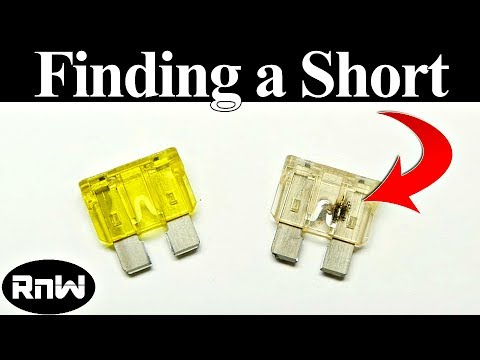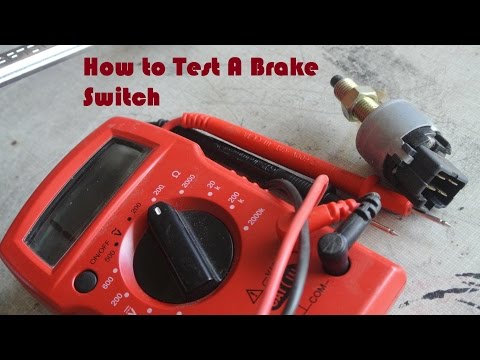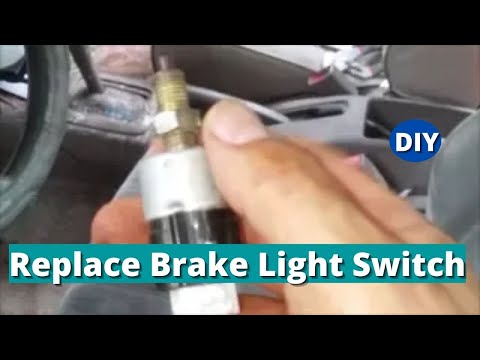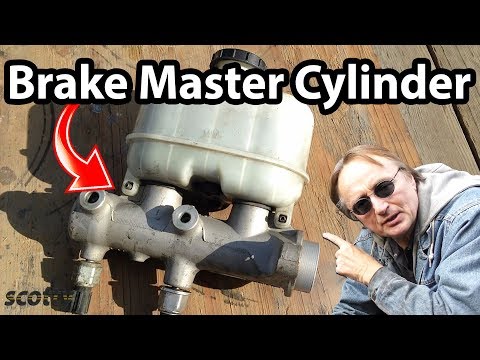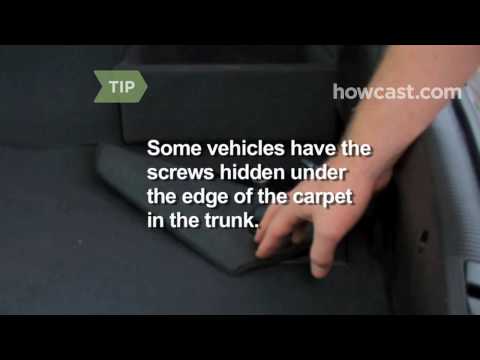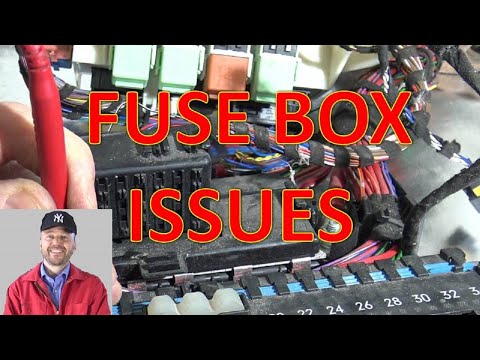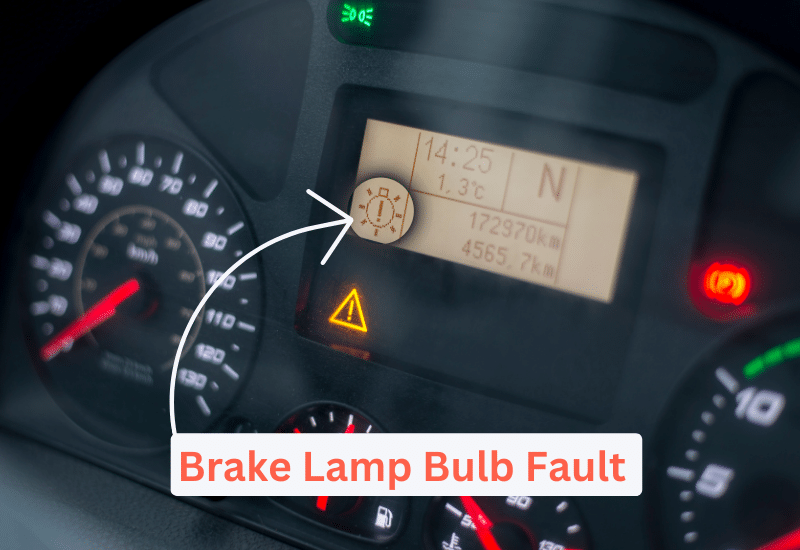
Your car’s brake lights are certainly not the sexiest part of the vehicle. Yet they play an absolutely critical role in letting other motorists know that you’re slowing down so they can avoid rear-ending you.
In the past, when you were sitting behind the wheel, there was no way to know if you had a tail light or brake light out. If you got lucky, your friend noticed and told you. If you weren’t so lucky, you’d get pulled over by a cop and given an annoying “Fix It” ticket.
Modern cars have a lot of monitoring systems, alerts, and electronic safety systems to let you know when there’s the slightest thing wrong with your car. For some models, this includes a brake lamp fault warning.
Normally, when it pops up on your dash, it just means that the bulb finally gave up the ghost, and you need to replace it. However, if the car is relatively new, or it happens again shortly after replacing the bulb, you might have loose wires, a short circuit somewhere, or possibly a failure in the brake switch.
To find where the problem lies, we’ll need to shed a little light on some of the common causes of brake lamp bulb faults and how to fix them.
What Does a Brake Lamp Bulb Fault Mean?
When a brake lamp fault warning message pops up on your car’s dashboard, it means that the vehicle’s computer isn’t registering a complete circuit in the brake light when you step on the brake pedal. This is becoming an increasingly common warning feature on newer cars over the last 5 to 10 years. However, a lot of older vehicles don’t have this alert built into their system.
In some older cars without a digital dash display, a brake lamp fault will cause a check engine or other warning light to come on. This might then throw a code C1223.
How Do Brake Lights Work?
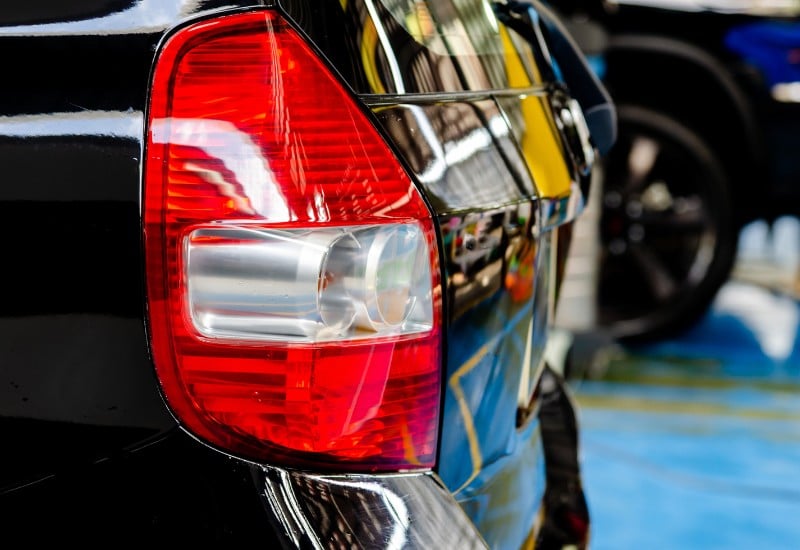
In most cars, brake lights and taillights are connected to the main control switch that also controls the headlights and running lights. When you turn on your headlight, the taillights will also come on. However, the brake lights stay off.
The brake lights are directly connected to the brake switch, which is integrated with the brake pedal. Anytime you step on the brake pedal, it automatically turns on all the rear brake lights.
Most modern cars have the brake and taillights running through the same fuse, which is usually found in the interior circuit panel. The wiring then runs back to the rear light bulbs themselves, which typically have a dual filament inside. A lower-lumen filament for the taillights stays on when the headlights or running lights are on. Then there’s a higher-lumen filament for the brake lights that only comes on when you step on the brakes, which activates the brake light switch.
However, some older ones have a separate fuse and filament bulb specifically for the brake light and a separate filament for the taillights. You can always check your owner’s manual to confirm how your car’s rear lights are configured.
5 Common Causes For a Brake Lamp Bulb Fault
The most logical reason why you have a brake lamp bulb fault popup on your dash display is that one or both of the filaments in the brake/taillights burned out. These are generally supposed to be long-lived fixtures that don’t just burn out in a few years. So, there’s a decent chance your car has some other electrical glitch going on, such as a short wire, a bad brake light switch, or a burned-out fuse.
1. The Filament Burned Out
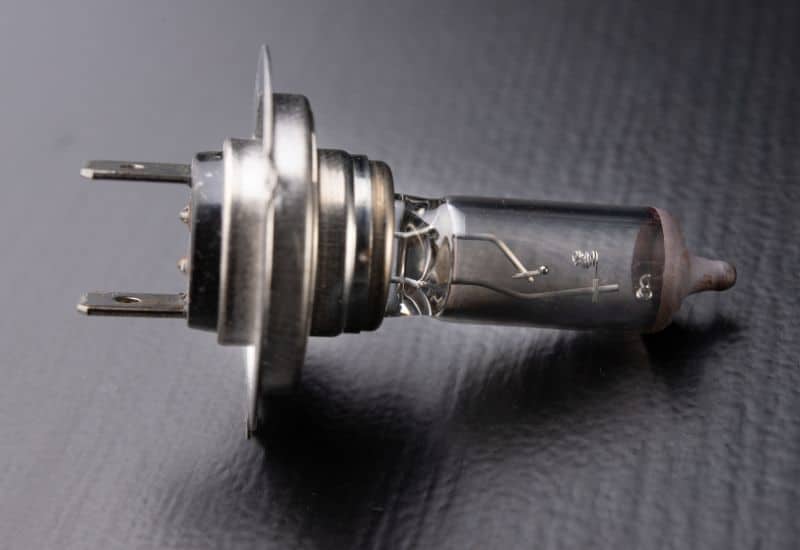
If you have a slightly older car, your brake light filament may have burned out and need to be replaced. However, considering that the average lifespan for brake and taillight filaments is between 250 and 600 hours, you should be highly suspicious that it’s just a problem with a filament in a car that’s less than 7 years old.
Water Causing a Short Inside the Filament Housing
Sometimes, when a brake light filament burns out prematurely, it’s because the taillight housing has a crack or a leaky seal that lets rainwater or road spray get in, which causes a short. You might get the brake lamp bulb fault warning on the dashboard. Change the bulb, and everything will seem fine for a week or two. Then you drive in a big rainstorm, and it happens again.
This could be from water or excess condensation inside the compromised taillight housing that shorts out the wiring connection. It could also be water damaging the filament itself.
You’ll usually spot some moisture if you check the light right away. You might even find some corrosion on the light fixture connection.
2. A Faulty Fuse
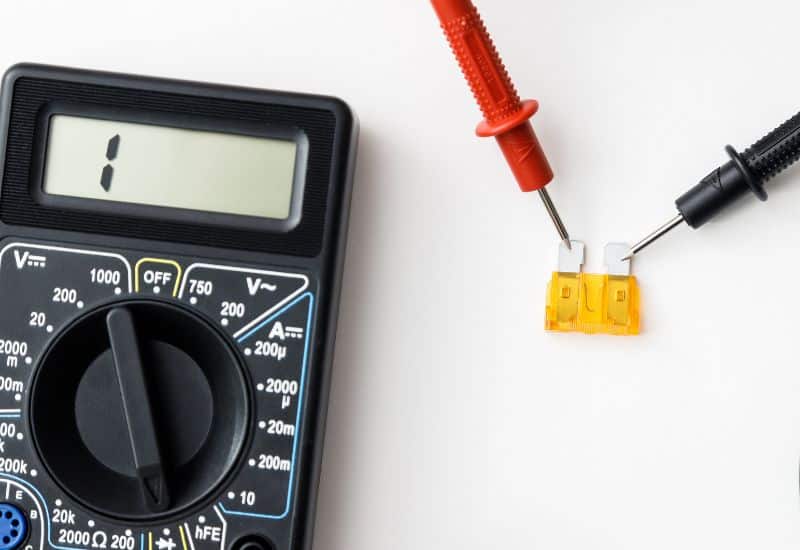
Sometimes, a faulty fuse or fuse that only partially breaks will cause the brake lights to work intermittently, causing the car’s computer to turn on the brake lamp bulb fault warning. The light fixture itself might look normal, and you might even be able to get it to come on when you test it. Then it doesn’t work when you reinstall it.
In a moment like this, you need to go straight to the fuse box and check the specific fuse for the brake/taillights. If it even looks the slightest bit suspect, you should change it out for one with the same amp rating and see if it happens again.
A lot of times, when a fuse blows or only partially burns out, it’s because there is another fault, like a short-circuited wire in between the brake switch and the brake light filament. If you replace the fuse and then you have the same brake lamp bulb fault warning come up again, you’ll need to start chasing wiring gremlins.
Short-Circuited Wires
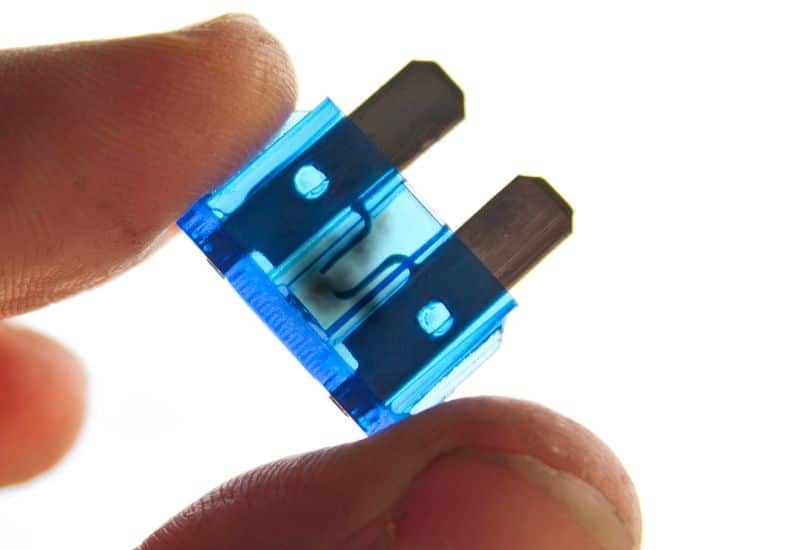
If you change the brake/taillight fuse right after it burns out a second time, you likely have a bad wire somewhere between the fuse box, the brake switch, and the taillights. However, finding the short or loose wire can be frustrating. It was diagnosed as a lot of wiring harnesses running through a conduit installed inside the vehicle’s frame.
The most likely place to start looking for a bad wire is in the driver’s footwell near the brake pedal or in the rear taillight housing. Most of the wire itself runs through a conduit, which isn’t prone to causing shorts. Though check the wiring diagram in your owner’s manual or the repair guide.
While you’re at it, be sure to check if your car has a chassis ground for the taillights. Some cars have their own independent ground. It’s usually a white wire from the taillight assembly that runs both the brake and taillights. Try to follow it to see if it’s loose or if there’s rust where it connects to the car’s chassis.
Also, check your model’s wiring diagram to see if the wires for the brake lights are on the same circuit as other wires running through moving parts. This includes the wires running into the driver’s side door controls, and it could be a short in one of those wires that is causing the fuse to burn out. This then removes the brake lights without the wires to the brake lights being affected!
Video on How to Find a Shorted-Out Wire
How to Fix
If the bad section of wire is in a difficult-to-reach place, you’ll likely need a mechanic to diagnose and repair it. Especially since chances are good that multiple wires are affected, and if it’s done wrong, there’s a serious risk of an electrical fire.
Having a mechanic run all new wires for your car’s brake/taillights and update your wiring harness can cost as little as $120 to $300. However, the repair bill can be as high as $500 or more.
3. A Bad Brake Light Switch

The brake light switch near the brake pedal can fail, severing the communication between the pedal and the lights at the back of your car. The system detects the disconnect and puts up the brake lamp bulb fault to alert you.
Some cars will even turn on the check engine light or the ABS warning light. This will throw a code you can pick up on a reader.
Code P0504 indicates a fault with the brake light switch signal control, which might also be called the “Brake Switch A/B Correlation.”
A bad brake light switch might also mess with your cruise control. Normally, stepping on the brakes deactivates the cruise control or essentially puts it in “Coast” mode. When the switch goes out, you might step on the brake, and the cruise keeps plowing on, forcing you to use the steering wheel controls to coast and brake to a stop.
How to Test a Bad Brake Light Switch
The brake light switch is usually near/connected to the brake pedal near the firewall and looks like a little black or white plastic cube or rectangular prism. It’s usually held to the stem of the brake pedal with a small machine screw and a clip. It’s then connected to a wiring harness that needs to be unplugged.
If it feels too loose on the first inspection, try pushing it back in, tighten the hardware, and test the lights again. It’s possible that an accidental bump of your foot knocked it loose.
Otherwise, you must carefully pull the brake light switch out of the connection port. There are usually two large pins and two shorter ones. Inspect the four pins for obvious signs of corrosion or electrical burnout. If there is, then you’ll need to replace the switch altogether.
If it visually looks good, but you still suspect it’s a problem, you can quickly test the brake light switch with a multimeter and the following steps.
However, you should get the reverse result as pressing the button for the larger ports activates the other smaller ports and vice versa.
How to Replace a Bad Brake Light Switch
Replacing a bad brake light switch with a new one is pretty much as simple as reversing the process of taking it out.
The replacement part cost for a new brake light switch can range from $45 to $75. A modestly capable DIY mechanic can usually replace one in less than half an hour with some basic tools.
4. A Bad ABS Relay or Bad ABS Control Module
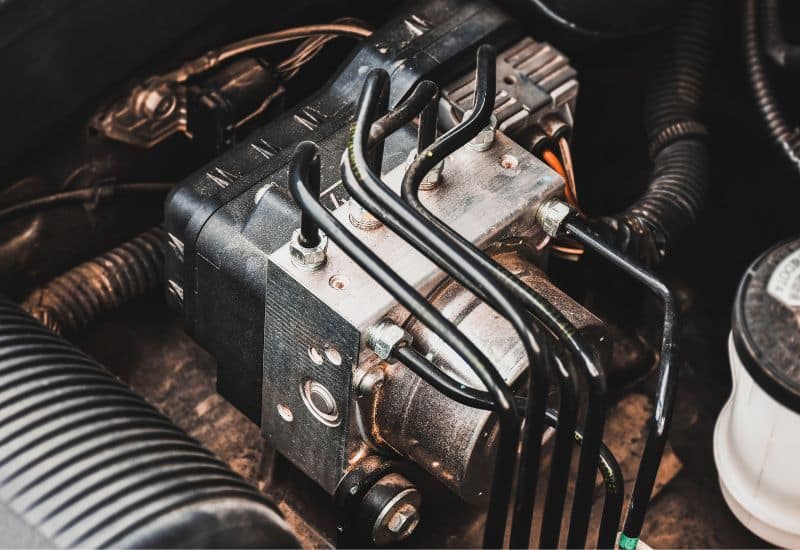
If you have a burned-out brake relay or a faulty ABS module, the information from the brake switch won’t be sent to the ECU, which can trigger the brake lamp bulb fault message or turn on the ABS warning light.
You might find the brakes juddering or momentarily locking up depending on how hard you’re braking. You might also notice that your speedometer is off from the actual speed if the ABS module’s failure also includes a wheel speed sensor problem.
If you get an ABS warning light or the check engine light comes on, it will also throw a code.
Code U0121 stands for Lost Communication With Anti-Lock Braking System (ABS) Module.
How to Fix
An ABS problem isn’t the sort of thing the average DIY mechanic can handle independently. You’ll need a professional mechanic to diagnose the extent of the problem and fix it fully. If you’re lucky, it’s just a matter of replacing the ABS control module.
The part cost here can vary wildly from as little as $280 to as much as $750.
Though the average cost to have a mechanic replace a bad ABS control module and inspect the brake system will usually run between $450 to $600 for parts and labor.
5. Low Brake Fluid or a Master Cylinder Problem
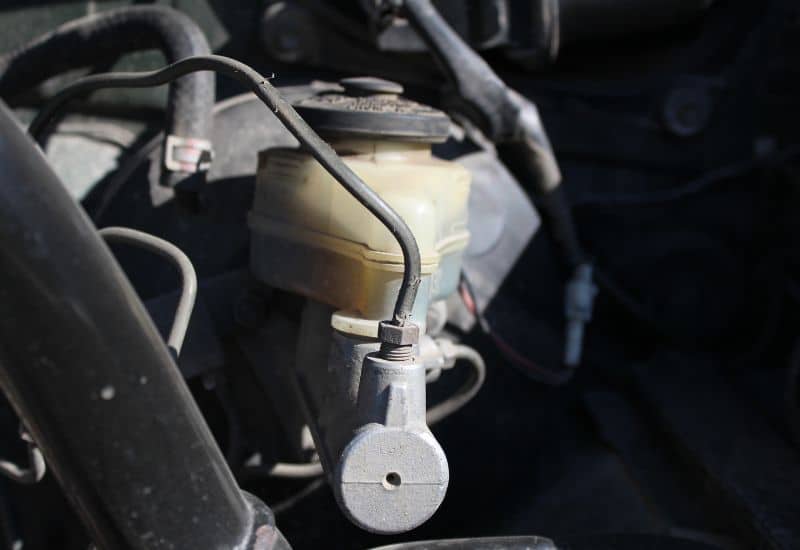
If your car has a major leak in one of the hydraulic brake lines or a failure in the brake master cylinder, it can cause the brake pedal to fade to the floor without activating the brake light. At this time, the catastrophic loss of hydraulic pressure would also turn on the red brake warning light, and you need to pull over as fast as possible. The system will hemorrhage brake fluid rapidly, reducing your ability to stop the car safely.
With a severe fault, you’ll likely see brake fluid dripping under the car. If it’s the master cylinder that failed, the leak will be near the firewall separating the engine bay from the interior of the car. If the leak is in one of the brake lines, you’ll see hydraulic brake fluid dipping out of the frame rails under the car or perhaps pooling under one of the tires.
How to Fix
If the reason your brake lamp fault warning came on is due to a bad master cylinder, the entire unit will need to be replaced. There really isn’t a good way to manually repair whatever’s gone wrong inside. Replacing the master cylinder itself might be within what a DIY mechanic can handle, but you’re also dealing with pressurized hydraulic fluid and important safety systems. The brake lines will also need to be properly bled.
So, the wise move here is to have a mechanic perform a total brake system inspection and then replace the master cylinder. This might also call for replacing one or more compromised brake lines to ensure the car’s brake system doesn’t suffer a massive loss of fluid again.
The cost of a mechanic replacing a leaking brake line or hose can range from $75 to $350. The price can vary widely depending on the extent of the damage to the line and surrounding hardware.
The cost to have a master cylinder replaced with a full brake inspection will run around $275 to $500. However, in some more sophisticated models, the price could go as high as $500.
The part cost can range from $175 to $300 with an additional $125 to $175 in labor cost.
Here Is How To Fix a Brake Lamp Bulb Fault (Step by Step)
A thoughtful troubleshooting process will help you pin down what caused the brake lamp bulb fault message and what you might be able to do to fix it. If you’re lucky, it’s a quick fix, and all you have to do is change a bulb or replace a fuse. If it’s a major problem, like a blown brake line or an ABS module failure, then you might be staring at a major repair bill.
Step One: Check to See If Your Brake Lights Work
This might seem like a bit of a no-brainer, but you need to know for sure if your brake lights and/or taillights are working at all or if they are stone dead. If one side lights up, but the other doesn’t, then chances are good. It’s just a burned-out filament.
Sourcing the part is relatively cheap and easy. Auto parts stores stock replacement bulbs for most models, usually less than $20 for two bulbs.
However, if you need to replace a dual filament bulb with the integrated taillight and brake light, the part cost might jump to $50. You can then replace the burned-out bulb/filament using the following steps.
Note
It’s very rare for both bulbs to burn out at the same time of their own accord. So, if both bulbs are toast, then chances are some other electrical fault burned them out, and you’ll need to find it before you can move forward.
Step Two: Check Your Fuse Panel
Most brake lights and taillights share a circuit with a fuse in the interior fuse box. To confirm which fuse runs your lights, you must check the owner’s manual or the repair guide.
Note
Sometimes, a fuse can truly burn out on its own. Often, these fuses share wiring with other components, such as the driver’s side door controls. If a short in a wire goes through one of the conduits in a moving part, it could pop the fuse again.
As crazy as it might sound. Take a few minutes to open and close the car’s front doors, turn up the radio, and work on any other moving parts. Then, check to see if the brake lights and the fuse are still in good working order.
If the fuse did blow again, then this simple test tells you there’s a short somewhere else that’s causing the fuse to burn out, and the brake lamp bulb fault is just a secondary symptom.
Check for Other Warning Lights & Codes
Look for any other warning lights when the brake lamp bulb fault first pops up on your console display. Sometimes, a check engine light will come on and stay on. However, the ABS warning light might only flash briefly when you touch the brakes.
Note
If the red brake warning light comes on or flashes, it tells you that there is a major fault in the hydraulic pressure in the master cylinder or the brake lines. The car is not safe to drive by any means. You need to park it immediately and have the car towed.
Check Codes
If you do have a warning light come on or flash, then there will be a code stored in the system that you can check with a code reader. You can take it to an auto parts store if you don’t have one, but the car is still driveable, and/or the brake lights still come on despite the code. Most will plug in a code reader for you for free.
The following codes will give you an idea of where the fault lies.
Code U0121 stands for Lost Communication With Anti-Lock Braking System (ABS) Module.
Code P0504 indicates a fault with the brake light switch signal control or a fault in “Brake Switch A/B Correlation.”
If the ABS module is bad or is failing, it can severely affect braking performance, making the car unsafe.
If it’s a bad brake light switch, then you will likely need to replace it, but if it was accidentally knocked loose, you might be able to tighten the clip, machine screw, or wiring harness.
How Much Does It Cost to Fix a Brake Lamp Bulb Fault?
If it’s merely a burned-out brake light bulb, a bad chassis ground, or a bad fuse, you might be able to get away with replacing it for less than $20.
If a single brake and taillight tandem fixture is burned out, then you might be able to simply replace the entire thing and clean up the connections for around $50.
In a case where a bad brake switch causes the brake lamp bulb fault warning, you might be able to replace it yourself for a part cost of $75 or less.
More major faults like a failing brake master cylinder or a bad ABS control module will require a mechanic to fix it properly. With these kinds of repairs, you can expect the final cost for parts and labor to set you back as much as $500.
Frequently Asked Questions
Is It Dangerous to Drive without Functioning Brake Lights?
Even driving during the day without properly functioning brake lights can be very dangerous as it puts you at risk of being rear-ended by other motorists who don’t immediately notice your car slowing down. If your car has turn signals and brake lights tied in, you might also be driving without indicators.
If you still have working taillights, you might be able to improvise turning the headlights on when you touch the brake pedal to give the drivers behind you an inkling that you’re stopping. Though this is just to get you home, to the mechanic, or the auto parts store, it is a very dangerous strategy in stop-and-go traffic!
Can a Leaky Taillight Cause a Bulb to Burn Out?
A crack in the taillight cover/housing or just a bad seal around the taillight can let in water from rain, melting snow, or even condensation from high humidity. Once it does, the water contacts the electrics, or just the bulb’s heat can burn out the brake light and/or the taillight, causing the brake lamp bulb fault to pop up on your dash display.
Replacing the bulb repeatedly isn’t the answer to a problem like this. Especially since water can cause corrosion on the wiring connection. You often have to replace the entire taillight housing or the physical seal.
Conclusion
If you’re lucky, a burned-out bulb or a blown fuse is just causing the brake lamp bulb fault warning message. Replacing the offending part is usually cheap and easy.
However, if both your taillight and brake light go out, then chances are good that there is a more major fault beyond just a bad bulb. If your car has a chassis ground for the taillights, be sure to check it. If you replace the fuse only to blow it out again and throw another brake lamp bulb fault, you likely have a shorted-out or damaged wire that shares the same circuit.
While you’re hunting these gremlins, also take time to check the brake light switch. Sometimes, accidentally bumping it with your foot can knock it loose or damage it. If your cruise control has been acting up, this is even more likely to cause your brake lamp bulb fault.
If you get a check engine light, ABS warning light, or brake warning light, then you likely have a more serious problem, and the brake lamp bulb fault is just a side effect. ABS module failures and master cylinder failures with hydraulic leaks are major problems. The car must be parked and towed to a mechanic to diagnose and repair it properly.

Written By
Jason Farrell
Jason Farrell is a certified master technician, the editor of Mechanic’s Diary in Pittsburgh, Pennsylvania. He is ASE (Automotive Service Excellence) certified and earned a Bachelor’s Degree in Automotive Technology from Pittsburg State University. With nearly 18 prior years of experience in the automotive field, he has extensive knowledge about Domestic, European, and other foreign makes and models of cars and light trucks. Jason’s experience working as a technician and service manager at dealerships, gave him the experience and know-how of most aspects of inspection, diagnosis, and repair from engine and drivability to electrical, HVAC, brakes, steering and suspension and everything in between.

